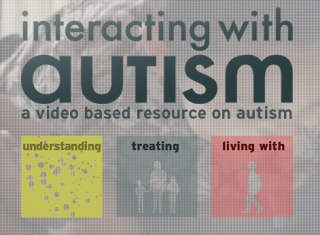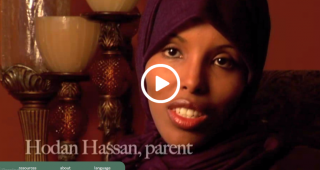Autism
Where Are We in Autism World and Who Are Our Guides?
New government-funded website shows we're listening better to autistic people
Posted October 5, 2013

Interacting with Autism, a new video-based web resource
Every so often a new autism resource appears, and like an updated map or set of directions it gives us the opportunity to check out where we’ve got to in autism world. That’s especially so in the case of Interacting with Autism, a video-based website that launched last weekend. Funded by the federal Department of Health and Human Services, it promises evidence-based content channeled via a sparkling creative team including Mark Jonathan Harris, who has won Oscars for three documentaries. Interacting with Autism has the potential to become a popular online destination for families and individuals seeking answers and insights into autism — and its happy surprise is the presence and influence of autistic people on the site.
But first, why is such a destination still needed? Anyone who has spent any time in autism world knows it to be a divided, somewhat treacherous place, where we can find ourselves caught in (and judged for) unexpected associations and assumptions. We tend to seek out a spot that works for us — Pro-cure, Neurodiversity, Playboy Bunny — and hang there, or sometimes huddle defensively.
One zone is lit up blue and dominated by Autism Speaks, the most well-known US autism organization. It’s a parade ground for non-autistic experts and parents, and the bulk of its dollars are invested in researching causes, cures and sometimes puzzling contributions to human understanding.
In another zone we have the Autistic Self-Advocacy Network (ASAN), an alliance of autistic people flying the neurodiversity flag, where the focus is on advocacy and supports for those who need them.
While both these organizations are big on science, they have respectively come to represent the medical model of autism (disorder, epidemic, awareness) versus the social model (difference, human spectrum, acceptance). A third zone that I’ll call Bunnyland is organized around vaccine-blaming drama and unconventional (sometimes demonstrably dangerous) medical interventions.
As in Iraq, no catch-all identity can unite these disparate tribes. Something must go, and Interacting With Autism, a project of the Agency for Healthcare Research and Quality, predictably dispatches the bunny back to her satin-lined burrow. The video on vaccines tells the story of the immunization controversy, the vast gulf between it and science, and the threat it presents to herd immunity. The clips on the causes of autism emphasize the relevance of genetic, environmental, and epigenetic factors and the complexity of their interaction, and acknowledge how little we actually know about those environmental pieces that attract so much melodrama. So that’s the end of the bunny stuff.
Still, the site designers have to occupy the space between Autism Speaks and ASAN, the medical and social models of autism. Some of my autistic friends say this can’t successfully be done: the philosophical conflict is too central. But every individual, every family, moves back and forth between these two zones. We’ve all known (or been) stunned parents emerging from diagnostic consultations with the news that their child is irretrievably broken, that even his apparent strengths are deficits. We’ve experienced, too, lecturing family members, rigid or cash-strapped educators, the judgmental public. And of course the medical and social models of autism are not freestanding but lean heavily on each other.

Hodan Hassan, the Somali-American parent of an autistic daughter
That intense mix of largely negative experience is captured in the short film No Word for Autism, included on this site, by Elinor Pierce and Rachel Antell (disclosure: Elinor is a friend of mine). The film addresses the apparent cluster of non-speaking autism in the Somali community of Minnesota — a community that insists autism is unknown in its homeland, where oral traditions are central to national and tribal identity.
“What is autism, and what kind of medicine are we supposed to give him, and how we do cure him?” asks Istaahil Malin, a mother. And then we see them grapple with the profound stigma and shame attached to difference within their own community.“I didn’t tell anyone, I didn’t tell my parents, my siblings, his father, no one. I didn’t tell one single person for a good six months,” says Idil Abdull, whose son was among the first to be diagnosed.
And yet their neurodiverse instincts come through, despite the extent of their children’s challenges. “I think autism is somebody who is really intelligent but who is wired differently. A lot of people with autism can succeed in the world and do better,” says Istaahil Malin.
How all of us understand autism emerges from mixed influences, and our conception evolves on the individual level as it does within the community and the cultural mainstream. We all live within multiple models. Uncomfortably and often illogically, sure. But here we are.
“It’s really important, from an anthropological perspective, to understand that whatever we call something, whatever we call any phenomenon, any human behavior, is determined by many, many factors acting in concert together,” says Richard Grinker, the anthropologist and autism researcher, on Interacting with Autism. “The kind of infrastructure we have, the kind of services that are available, the way we think about children and childhood and so on; and we cannot reduce our knowledge of human behavior to just one area. We need to see therefore the rise of autism as a meaningful diagnosis as existing within a whole matrix of different forces.”
So how does Interacting with Autism interact with all this? Mostly I’m struck by the influence of the autistic self-advocacy movement. Nothing about us without us, they say (ASAN’s mantra), pointing to the preponderance of autism coverage that includes no autistic voices whatsoever, and what can seem like a painfully slow pace of change. Yet change is upon us, as Interacting with Autism demonstrates. The home page features rolling quotations that are predominantly from autistic commentators (Temple Grandin, Stephen Shore, Amanda Baggs, and Donna Williams).
The site’s coverage is divided into three categories: understanding, treatment, and living with. Understanding leads with Voices from the Spectrum, a ten minute clip that acknowledges autism can be understood both as a mental disorder and a means of expanding human diversity. With one exception, everyone commenting here is autistic. The contributors include Tim Page, music critic and author, Alex Plank, founder of Wrong Planet and early Wikipedia contributor, Daniel Gross, filmmaker, students Jack Robison and Kirsten Lindsmith, and Ido Kedar, who uses communication aids.
Parents’ Perspectives comes next. There’s talk of painful realizations, even grief and devastation, in response to the dire predictions that were made for their children’s future and comparisons with typically developing children. Parents who themselves identify as autistic seem to be absent. But these parents emphasize moving forward and embracing the opportunity to communicate effectively with their children and help them thrive. “It doesn’t have to be that traumatic,” says Patricia Gross, mother of Daniel: “To me, society is what’s mindblind, thinking that we’re so sure autism is a disability.”
Some autistic viewers will object to the presence of the medical model on this site, and the prominence of Autism Speaks and academic experts who are not perceived as allies. In a publicly-funded resource at this stage, I’m not sure it’s realistic to expect otherwise. In any case, the babies shouldn’t be tossed out with the bathwater. Sometimes, though, the trade-off seems unnecessary. Would it kill us to talk not of disorder and treatments but condition and supports? The pathologizing framework was invented not by nature but by people, and we can choose to use it sparingly. Susan Sontag argued convincingly that the way we talk about illness does a lot to determine the way we experience it. Her argument is at least as applicable to disability — is in fact the social model of disability, the idea that the biggest obstacles faced by disabled people are (or emerge from) the negative assumptions that pervade our culture.
When I asked three autistic friends to check out the site, in each case their first criticism was about inaccessibility, specifically missing subtitles and a selective commitment to transcripts. On a disability site, that’s a red flag. There are some typos, missing videos and mismatched content, presumably speaking of a rush to publication. Some video clips are skimpy, one-off comments rather than debates, and might be placeholders for more nuanced content. The question of whether we need a cure for autism is left to Geraldine Dawson, a child clinical psychologist and Chief Science Officer of Autism Speaks, who presents it as high versus low functioning issue — the argument with which many parents tend to reject the entreaties of self-advocates that a cure is not the answer: You aren’t like my child! You have nothing to say to me!
There is an opportunity here for Interacting with Autism to host a video featuring autistic men and women representing various manifestations of autism, and their parents, talking about their childhoods and drawing on photos and video — showing that even children who were like their child can become communicative, competent adults with meaningful skills, making meaningful contributions. Among the misunderstandings and sources of grief that keep coming up in autism world, this one looms among the largest.
I’m still exploring the site. Let me know what you think of it.




